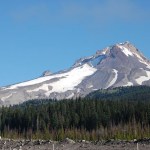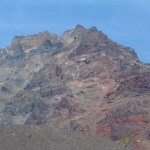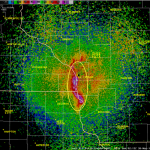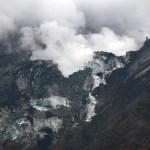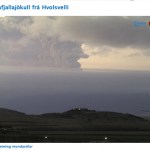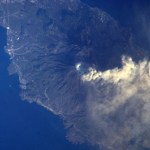Wouldn't it be great if everyone was as good at admitting their mistakes?
Abstract: Peer-reviewed journals are a pillar of modern science. Their aim is to achieve highest scientific standards by carrying out a rigorous peer review that is, as a minimum requirement, supposed to be able to identify fundamental methodological errors or false claims. Unfortunately, as many climate researchers and engaged observers of the climate change debate pointed out in various internet discussion fora, the paper by Spencer and Braswell [1] that was recently published in Remote Sensing is most likely…
remote sensing
Finally, a chance to catch up a bit ... !
Yasur erupting in May of 2010.
Some news from the world of volcanoes:
The BBC has a series of videos one the fallout from the Eyjafjallajökull eruption - including a look at the area around the volcano and how the economy has been affected by the eruption. However, things seem pretty quiet at the summit of the Eyjafjallajökull summit where snow can begun to settle without melting - and the Icelandic Met Office appears to think that the eruption is more or less (but not officially) over. And take this press release as you will, but a recent study…
Mt. Hood in Oregon, taken August 2008. Image by Erik Klemetti. Click on the image to see a larger version.
Quick news!
I'm not going to go into too much depth right now about the recent study published in Nature Geoscience on Mt. Hood in Oregon - I plan to talk about it more in a few weeks. Why is that? Well, the lead investigator on the study, Dr. Adam Kent of Oregon State University, is a friend of mine (and occasional Eruptions commenter) so I plan to get the details from him before posting. I was also peripherally associated with some of this work - mostly in the field acting as a pack…
Lots of little pieces of news I've run across ... time to play a little catch up.
Stromboli: A volcano after Don Ho's heart.
Every once in a while, my RSS feeds will dredge up some articles from years gone by ... and this week there were two New York Times pieces that are a few years old, but interesting nevertheless. The first is about research conducted by Dr. Robert Sohn at WHOI on explosive undersea eruptions. The second is work by Corr and Vaughan about finding subglacial volcanism in Antarctica. Both are interesting reads if you missed them (like I did) the first time around.…
The northern Chilean and southern Peruvian Andes are full of volcanoes that look stunning - I mean, jaw-dropping details of volcanism litter the landscape. The reason for this is two fold: (1) there is an awful lot of volcanism in the northern Chilean/southern Peruvian Andes (as known as the Central Volcanic Zone) - and has been that way for over 10 million years and (2) it has also been very, very dry in the area (most of which is known as the Altiplano-Puna Plateau) for at least a few millions years as well - it is the home of the Atacama Desert! So, this means you get lots of volcanic…
The latest update from the Smithsonian/USGS Global Volcanism Program!
Highlights (not including Taal, Eyjafjallajökull and Bezymianny) include:
Another thermal anomaly was spotted on an Kuril Island volcano - this one being Tiatia. The volcano has no seismic monitoring network, so the thermal anomaly is all that has been observed.
Lava flows and strombolian explosions continue at Guatemala's Pacaya. Some of the explosions have launched bombs hundreds of meters into the air.
Kliuchevskoi was another busy Russian volcano, with a large thermal anomaly and ash explosions that produced a plume…
Nature is big. Really big! The US National Weather Service revealed this image taken last Saturday showing a massive swarm of newly-hatched mayflies erupting from the Mississippi River near La Crosse, Wisconsin.
The swarm was captured using doppler radar, which is used to track the direction and velocity of distant objects (it's the same type of technology used by traffic police in speed guns). The National Weather Service says:
The bugs are showing up as bright pink, purple, and white colors along the Mississippi River mainly south of La Crosse, WI. After the bugs hatch off the water…
The NASA Earth Observatory has been dazzling us with images from the Eyjafjallajökull eruption for months - but they have been dazzling us with volcanoes images for years! Here are two more images for those of you who love seeing volcanoes from above:
Cleveland, Alaska
As I mentioned earlier this week, Cleveland volcano likely had a small eruption over the weekend producing a small ash cloud. Cleveland is already known as an extremely picturesque volcano, both from the ground for its highly conical shape - a textbook andesitic stratocone - and from space. This new June 1 image is from almost…
Undated image of Bezymianny in Kamchatka.
Eruptions reader M. Randolph Kruger just let us in on a significant eruption at Bezymianny in Kamchatka. The AVO/KVERT alert for the volcano suggests a fairly significant explosive eruption that might cause some snarls in the international air travel over the Kamchatka Peninsula. The KVERT statement:
A strong explosive eruption of Bezymianny volcano occurred from 12:34 till 12:50 UTC on May 31, according to seismic data. Ash fall in Kozyrevsk village is continuing. The volcano obscured by clouds. A big ash cloud remains over Kamchatka at present (…
Brief news!
Lava flows reaching the sea at Kilauea in Hawai`i. Image from November 2009, courtesy of HVO/USGS.
The Alert Status at Cleveland in the Alaskan Aleutian Islands was raised to Yellow (Advisory) by the Alaska Volcano Observatory after new signs of activity emerged. The latest report from AVO on the volcano says a thermal anomaly has been spotted at the summit, which typically is one of the first signs that the volcano is entering an eruption period. However, there is no real-time seismic monitoring for Cleveland, so that is the only clue (right now) that AVO has. Cleveland is a…
News, news, news!
Ash from Eyjafjallajökull piling up on a roof at Seljavellir. Image courtesy of the IMO, by Ari Tryggvason.
The latest from Eyjafjallajökull has the volcano continuing to puff away - producing intermittent airspace closures over Europe. The Icelandic Met Office reports a ~7 km (21,000 foot) ash plume, but they note that the explosivity of the eruption seems to have waned some since a maximum on May 13. Right now, the IMO estimates the eruption rate at ~200 tonnes/second. Lets put that in a little perspective - a Ford F-150 pickup weighs about 2 tonnes, so the volcano is…
Ah yes, a reminder that there are other volcanoes erupting around the world than Eyjafjallajökull - but yes, it is true! Here is the latest USGS/Smithsonian Global Volcanism Program Weekly Volcanic Activity Report!
Highlights (not including Iceland) include:
Another volcano in the Kuril Islands of Russia is showing signs of, well, something. Ketoi was noticed to be experiencing increased fumarolic activity according to satellite images. Ketoi hosts a Pleistocene caldera but has had three historic eruptions over the last few centuries, most recently in 1960, and all of which were explosive…
The GÃgjökull outlet glacier on Eyjafjallajökull, showing the steaming lava flow carving its way through the glacier. Image taken May 5, 2010 by Dr. Joseph Licciardi.
A quick update on the ongoing activity at Eyjafjallajökull:
The activity at the volcano continues to be more explosive during the last few days than it was in the previous week, leading to more potential for airspace closures over Europe if the winds were to shift. Currently, the VAAC ash advisory only seems to suggest that even Spain may get a taste of the ash sometime tomorrow, but most of Europe will be OK. However,…
Grading grading grading!
A webcam capture of the eruptive plume from Eyjafjallajökull on the morning of May 6, 2010.
News:
A quick update on the Eyjafjallajökull eruption: The volcano has been producing an impressive ash plume over the last day (see image above). The current ash plume is reaching 5.8-6 km height (19-20,000 ft) - and causing some trouble over Ireland and Scotland. However, much of airspace closed yesterday has reopened (for now). You can see two new images of the ash plume over at the NASA Earth Observatory. As for the continued fallout from the ash plume from April,…
Lots to do!
Tourists flock to the Eyjafjallajökull-Fimmvörduháls in Iceland.
The media does love the term "supervolcano", and a number of Eruptions readers sent me a link to the article on the dreaded submarine "supervolcanoes". I would delve into this article from Live Science, but it sadly again does a dreadful job with a lot of this - remember, "supervolcano" is a made-up word by the BBC with no strict definition, so trying to say there are a dozen supervolcanoes worldwide is just silly. And why does it take multiple paragraphs and multiple mentions of "scientists" before they get a…
Idunn Mons on Venus with recent emissivity data from the Venus Express overlaid on the topography, suggesting recent lava flows.
NASA released images today that suggest that the surface of Venus has experienced some relatively recent volcanic events (geologically speaking). By examining the surface in infrared, the Venus Express, launched by the European Space Agency (ESA) has found that three spots on the surface exhibit signs of recent volcanism. The long-and-short of the research lead by Dr. Sue Smrekar of JPL is that a number of Venutian lava flows (shown above on Idunn Mons) show less…
The latest in my Volcano Profiles series, this one on Erta Ale in Ethiopia.
The summit crater at Erta Ale in 1994
Location: The Afar region of Ethiopia.
Height: 613 m / 2,011 feet
Tectonic setting: Erta Ale (meaning "smoking mountain") is part of the East African Rift, where the African Continent is tearing apart along a seam that runs from the Red Sea/Gulf of Aden (two other arms of the rift themselves) south through eastern Africa. Many of the large lakes of eastern Africa such as Lakes Albert, Tanganyika, Nyasa and Kariba fill rift valleys created by the cracking of the continental plate…
Leaving for Death Valley tomorrow - I'll be sure to take some pictures of Ubehebe Crater and the volcano at the Mirage. This will likely be the last new post until about a week from now, but look for the Erta'Ale Volcano Profile, maybe a new Mystery Volcano Photo and I'll leave a thread open for any new volcano news.
Colima in Mexico.
Eruptions reader Tim Stone sent me this image from Japanese astronaut Soichi Noguchi's Twitpic feed - it is a stunner of the caldera on Jebel Marra in Sudan. The only known historical eruption for this volcano was ~2000 BC within the Deriba Caldera, but it has…
Did I mention its a busy week?
The lava lake at Erta'Ale in 2008. Image courtesy of Stromboli Online.
Our Icelandic saga continues, with more earthquakes and more speculation/information on the parts of Eruptions readers. Keep up the discussion - I'll be fascinated to see who turns out to get closest to what actually happens, prediction-wise. The seismicity has quieted somewhat again in the last 12 hours, so we wait eagerly to see what comes next. Remember, Iceland is the land where volcanoes helped change history, so it is always fun to talk Icelandic volcanism.
The NASA Earth Observatory…
Sakurajima Volcano in Japan, taken from the ISS on February 17. Image courtesy of Soichi Noguchi.
Eruptions reader Tim Stone sent me a link to the TwitPic feed for Soichi Noguchi, the Japanese astronaut currently on board of the International Space Station. The space traveller got a shot of Sakurajima from space, showing a beautiful plume drifting off - and great detail of the towns and roads near the volcano. Soichi has some other great shots (and comments to go with them), including my old haunt Seattle (with a comment about Ichiro), Mt. Aso - another Japanese volcano, and the Patagonian…
